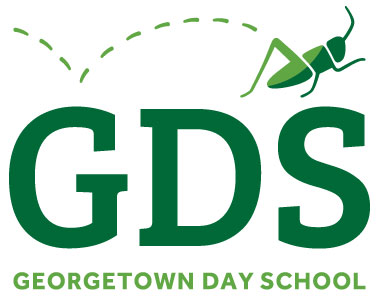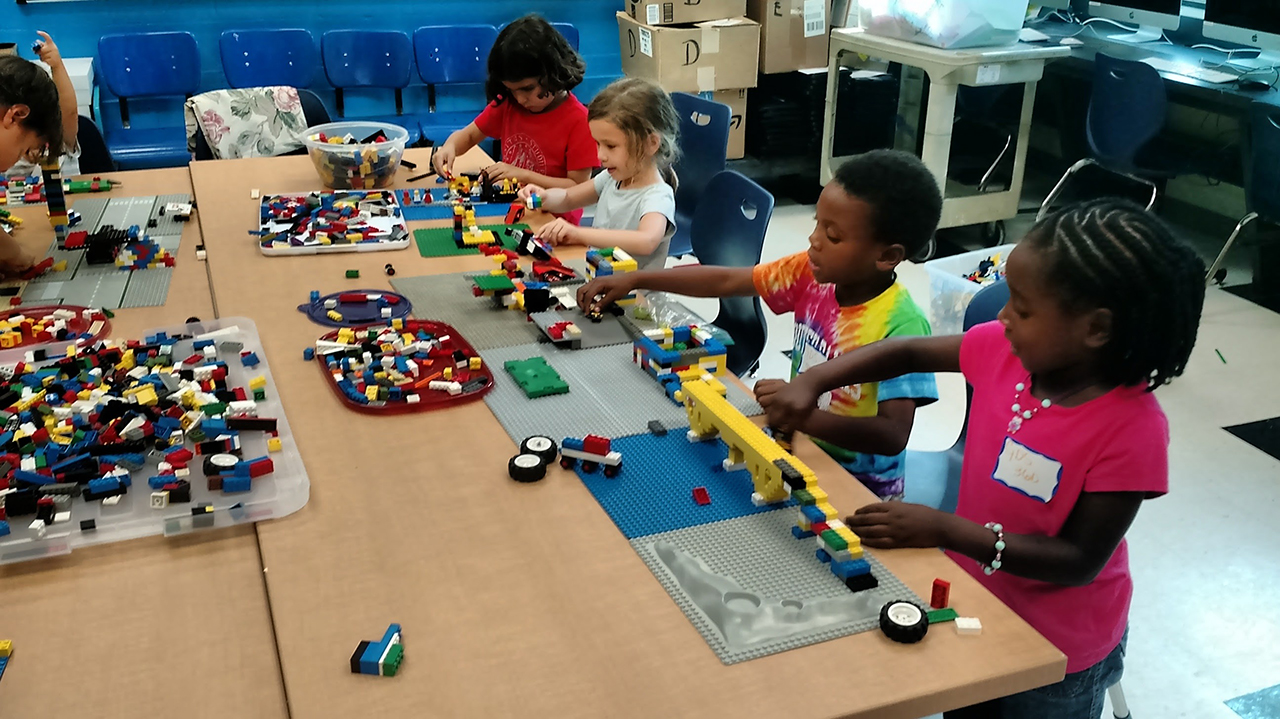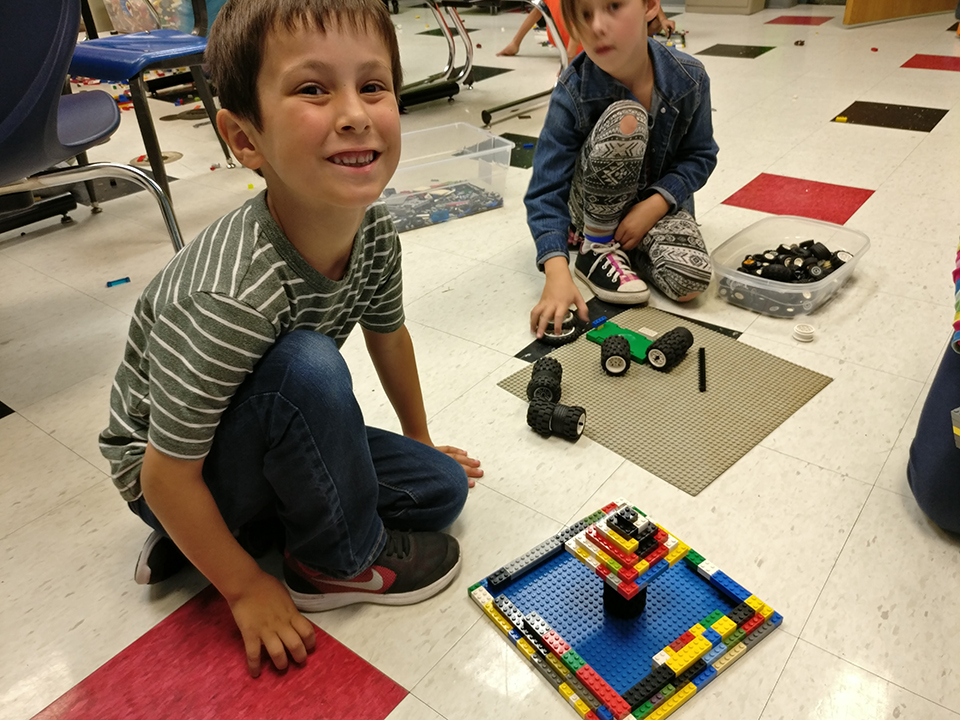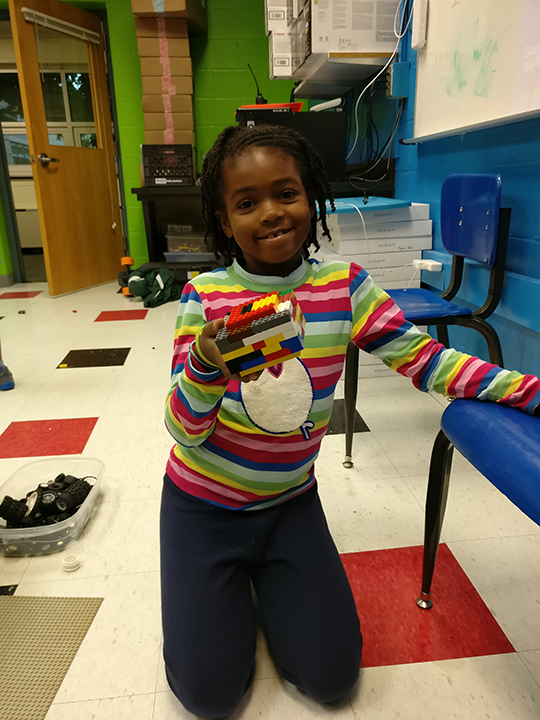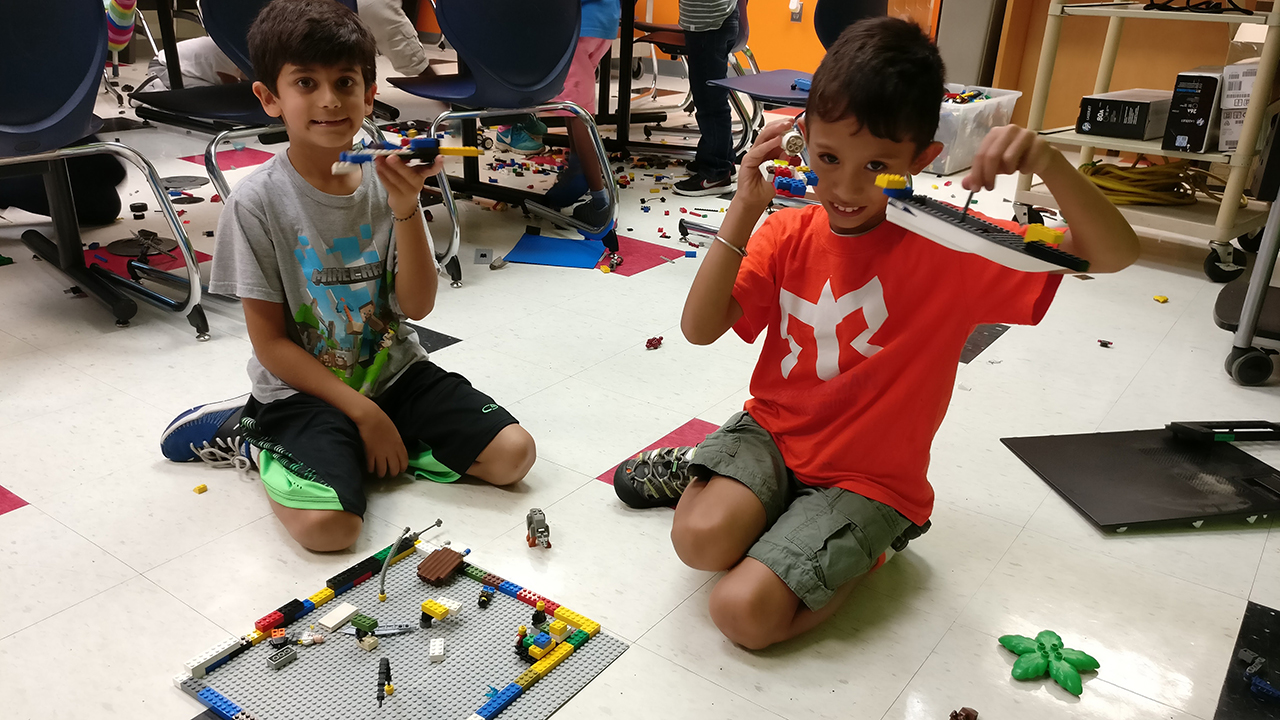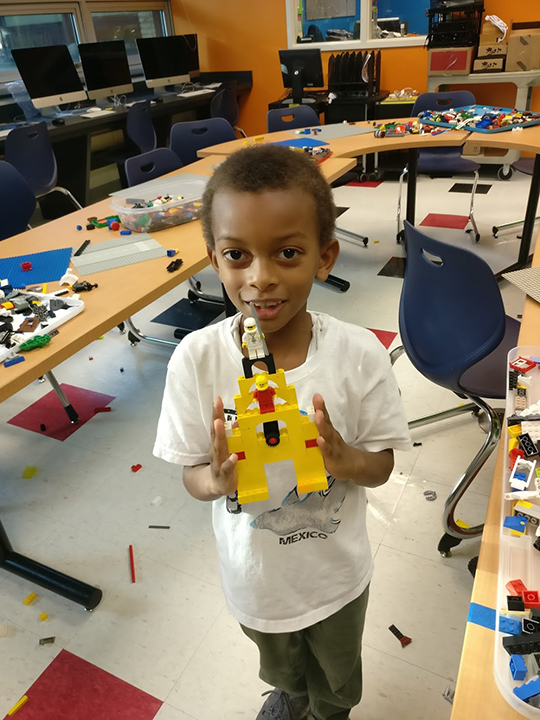At their base level, LEGOs are simple units of basic geometry that can be assembled in a variety of ways. And yet when kids hold these little blocks with their distinct colors, shapes, sizes, and connecting regions and turn them into a working machine, a bridge that can hold weight, or a structure from their imagination, LEGOS become a powerful teaching tool. In the GDS 360 program, LEGOS challenge kids to communicate ideas in a tactile and practical way, develop negotiation and problem solving skills, and share their imaginations with their friends.
For our PK/Kers, the challenge is not always in the design. Their challenge is often in understanding how to connect the bricks with enough force for them to stick together, but not so much force that the structure breaks. While developing their fine motor skills, students are figuring out ways to make their imagination ideas come alive.
In the 1st-2nd LEGO Engineering class, students are challenged to recreate architecture or try new building techniques: creating stronger/longer bridges, taller/sturdier towers, assembling vehicles from wheels and axels, and creating 3D polygons (cubes/pyramids/square pyramids) using only square or rectangular bricks. The students rely on each other and on some suggestions from the teacher to overcome design challenges and to apply already developed techniques to new ideas (e.g., the method of overhanging Legos to create a staircase can be used to create pointed pyramids when revolved about an axis).
LEGO Robotics (3rd-5th) is designed to challenge students to develop the skills to observe and connect static and kinetic parts with the intent of transferring motion and actions. This course pushes students to observe and use the simple machines, like gears, axels, and pulleys. Challenges at this stage include designing catapults, creating a car where both rear wheels are indirectly connected to a single motor, and creating assemblies to mount motors and gear systems. This group then transitions into using LEGO Mindstorm Programmable robot kits where students must synthesize both the vessel and programming.
When students express ideas and emotions in traditional classes, it is often through words, art, etc. GDS 360 LEGO classes give students an opportunity to create the stage, characters, and narratives—developing their fine motor skills and constructive mindsets while expanding their linguistic and communication skills in a fun and challenging way.
